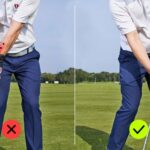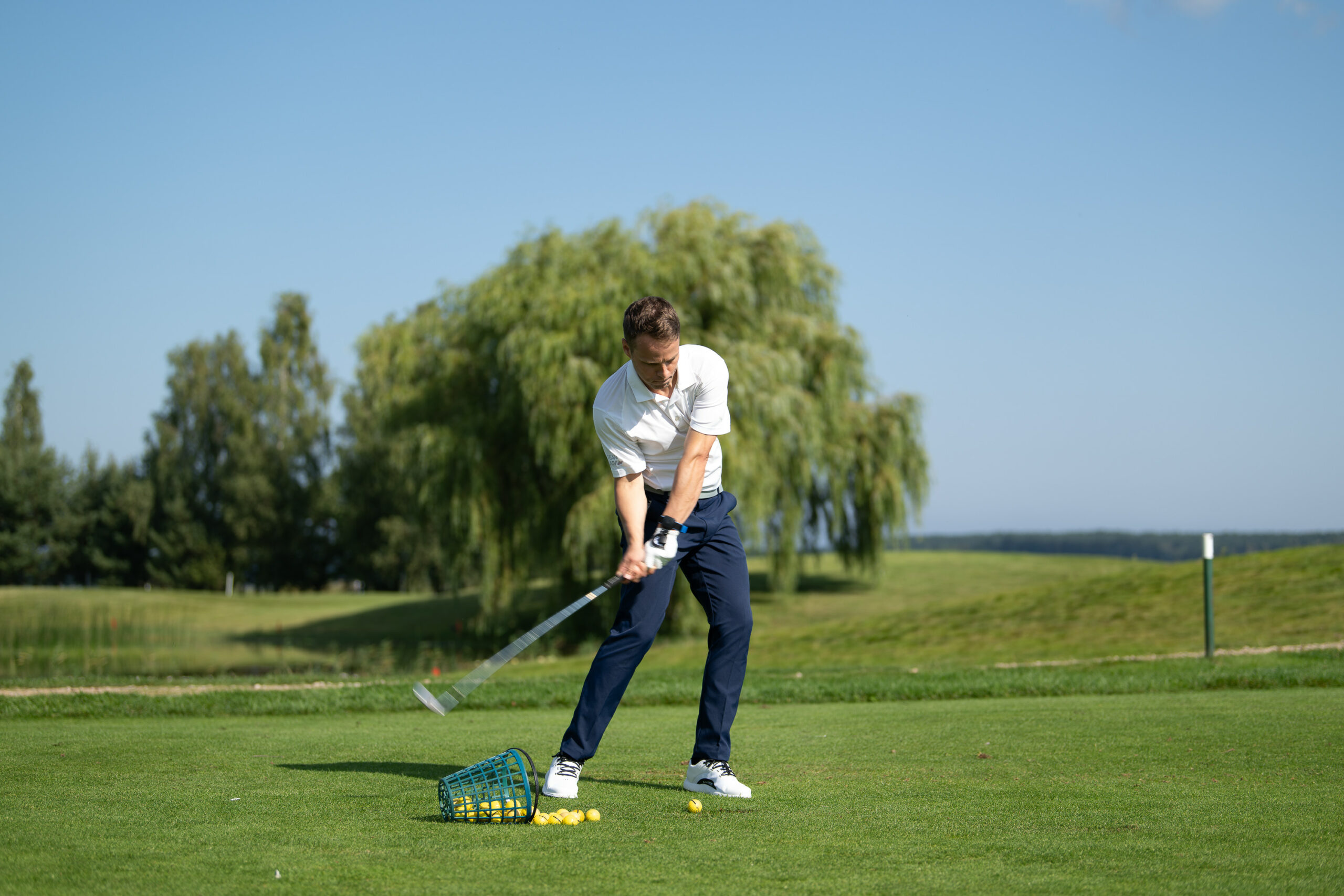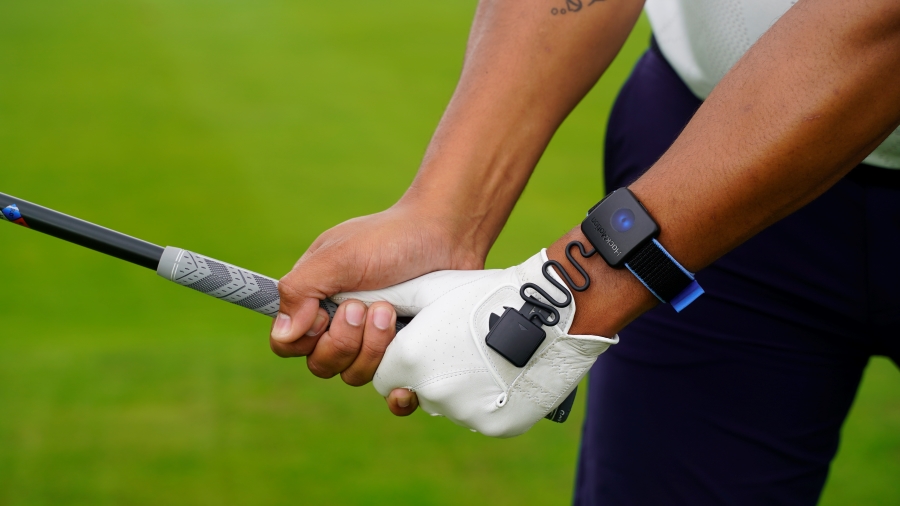Golf Club Distances by Handicap: How Far Should You Hit Each Club?
Forget how far you hit every club; how far should you hit every club?
Most golfers think they hit their golf shots further than they actually do. If you can narrow down your exact yardages, you’ll play better golf.
We took a look at what these average distances should be across a wide range of handicaps to give you a baseline.
These aren’t “ideal” numbers. They are averages meant to help you understand where you stand, where your distance gaps are, and how to use HackMotion to squeeze out more yards with better wrist mechanics, not more effort.
Long Game Distances by Handicap
Driver distance is often a way that golfers will judge other players to determine how good they are.
Here are some of the long game distances you should know for a driver, three wood and hybrid.
Average Total Distance Chart – Driver, 3W, Hybrid
| Handicap | Driver | 3-Wood | 4 – Hybrid |
|---|---|---|---|
| 0 | 285 yds | 260 yds | 235 yds |
| 5 | 265 yds | 240 yds | 220 yds |
| 10 | 255 yds | 230 yds | 210 yds |
| 15 | 235 yds | 215 yds | 195 yds |
| 20 | 220 yds | 195 yds | 180 yds |
| 25 | 200 yds | 175 yds | 160 yds |
Distance gaps are biggest here, better players launch the ball higher, reduce spin loft, and keep the face square earlier in the downswing.
For more detail on where your driver distance should be-and how to increase it-check out the Driver Distance Chart.
Tips to Increase Driver & Fairway Wood Distance
If you’re disappointed with your yardage, here are some tips to help you gain extra distance.
- Shift from a cupped to a slightly flexed lead wrist to reduce dynamic loft.
- Hit up with the driver, but let the 3-wood/hybrid bottom out slightly in front.
- Prioritize center-face contact – small mishits cost 10–15 yards.
- Don’t let the face stay open early; your matchups at P6 determine everything.
- Fix sequencing: no early throw from the top.
- Make sure your driver shaft isn’t launching the ball too low or too spinny.
Drill for More Driver Distance: Trail-Foot Driver Power Drill
This drill helps you create a fuller backswing, unlock more potential power, and transfer that power into the ball.
By pulling your trail foot slightly back, you give your hips more room to turn and make it easier to deliver the club with speed without forcing anything or overthinking mechanics.
Trail-Foot Driver Power Drill – Step by Step:
- Set up as normal with your driver.
- Pull your trail foot (right foot for right-handed golfers) a few inches back and slightly flared out.
- Make a big, full backswing, letting your hands travel farther around your body.
- Swing down while keeping the trail foot back — feel the lower body slow down as the club releases past you.
- Hold your finish and repeat for 8–10 reps, then return to your standard stance.
Iron Distances by Handicap
There is a lot of variation in iron distances because of iron lofts. Modern iron lofts are stronger than older irons so you’ll see potentially lower flights and some more roll, etc.
Keep in mind that the type of iron you play will impact these numbers.
Average Total Distance Iron Chart – 4i-9i
| Handicap | 4i | 5i | 6i | 7i | 8i | 9i |
|---|---|---|---|---|---|---|
| 0 | 220 | 200 | 185 | 175 | 160 | 150 |
| 5 | 200 | 185 | 172 | 165 | 150 | 140 |
| 10 | 195 | 180 | 170 | 160 | 148 | 138 |
| 15 | 180 | 170 | 160 | 150 | 140 | 130 |
| 20 | 165 | 155 | 148 | 142 | 133 | 125 |
| 25 | 150 | 140 | 135 | 130 | 120 | 110 |
Tips to Add Distance with Irons
If you’d like to add more distance with your irons you want to make sure your contact is as close to square as possible.
In addition, making sure the wrist is flexed instead of extended will help improve overall distance and accuracy.
- Move your low point forward – behind-the-ball strikes cause massive distance loss.
- Deliver less dynamic loft (no late lead-wrist extension).
- Eliminate early casting; save the angle until late.
- Watch out for “floaty” high shots – usually a sign of extension + scooping.
- Check your yardage gapping – if two irons overlap, replace one.
- Consider whether your iron shafts are launching too high.
Simple Drill for More Iron Distance: Motorcycle Drill
This drill helps you deliver the club with a stronger, more stable lead wrist so you can compress the ball, lower launch, and add effortless iron distance.
The “motorcycle” move teaches you how to control the clubface early in the downswing.
Motorcycle Drill – Step by Step:
- Set up to the ball with a mid-iron in your normal stance.
- As you start the downswing, feel your lead wrist flex (bow) slightly, as if you’re revving a motorcycle throttle forward.
- Use HackMotion to confirm that your lead wrist is moving into flexion, not extension, during the first part of the downswing.
- Keep that feeling as you rotate through — this helps you hold shaft lean and strike the ball with more compression.
- Hit 8–10 shots using the same sensation, checking HackMotion after each.
Wedge Distances by Handicap
One thing to keep in mind about wedge distances is that the accuracy of these distances, and the gapping is the most important part.
The actual length of each wedge shot should not be your main concern. If your gap wedge maxes out at 100 that’s fine, just make sure you know that number and incorporate that into your club selection.
Average Total Distance Wedge Chart – PW, GW, SW, LW
| Handicap | PW | GW | SW | LW |
|---|---|---|---|---|
| 0 | 140 | 125 | 105 | 85 |
| 5 | 130 | 115 | 95 | 75 |
| 10 | 125 | 110 | 90 | 70 |
| 15 | 120 | 105 | 85 | 65 |
| 20 | 110 | 95 | 80 | 60 |
| 25 | 100 | 85 | 70 | 50 |
Better players don’t always hit wedges farther, they hit them with consistent launch, spin, and contact.
Tips to Add Distance with Wedges
If your distances with your wedges seem like they aren’t enough, don’t forget to make sure the shaft that you are using is correct. Some golfers forget to consider shaft weight and flex with the wedges.
- Avoid adding loft through flipping or scooping.
- Keep the lead wrist flat or slightly flexed through impact.
- Use a three-quarter swing for better control and surprisingly more yardage.
- Maintain a slight forward shaft lean to stabilize dynamic loft.
- Standardize your launch window inconsistent height = inconsistent distance.
Drill for More Wedge Distance: Towel Compression Drill
This drill trains the wrist angles you need to compress wedges properly, more shaft lean, a flatter lead wrist, and a later release.
By placing a towel behind the ball, you’re forced to move the lead wrist into flexion and delay the clubhead so you can hit the ball first, launch it lower, and get more consistent wedge distance.
Towel Compression Drill – Step by Step:
- Place a small towel one grip-length behind the ball (closer if you’re more advanced).
- Set up normally with your wedge.
- On the downswing, focus on creating lead-wrist flexion (bowing) and maintaining trail-wrist extension to hold shaft lean.
- Hit the ball while missing the towel. This ensures you’re not releasing the club early.
- Use HackMotion to confirm your lead wrist has less extension at impact than it did at setup.
- Repeat for 8–10 reps, gradually moving the towel slightly closer as your contact improves.
Final Thoughts
These distance charts act as a starting point for understanding how your game compares across the bag. The real value comes from identifying why your numbers sit where they do.
If your driver, irons, or wedges fall noticeably short for your handicap, HackMotion gives you the wrist-angle data to fix the root cause, not just guess at it.
If your yardages still feel unpredictable after working through the drills, a professional golf coach using HackMotion can help you tighten up strike quality for more consistent distance.













